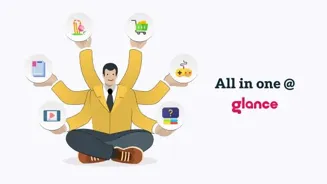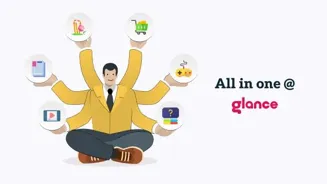Unveiling 10 Eye-Opening Facts That Will Change Your Perception Forever! Discover the wonders of the human eye
Namaste, readers! Ever wondered about those peepers you've got? You use them every single day,
from admiring the vibrant colours of Holi to reading this very article. But beyond just seeing, the human eye is a marvel of biological engineering.
Today, we're diving deep into ten mind-blowing facts about the human eye that will definitely change the way you see, well, seeing! So, get ready for a fascinating journey into the world of vision.
Your Eyes Can Distinguish Around 10 Million Colours!
Yes, you read that right! Those beautiful sunsets, the lush green fields, the intricate patterns on your mother's saree – your eyes can differentiate an astounding 10 million different colours. This ability is thanks to specialized cells in your retina called cones.
There are three types of cones, each sensitive to different wavelengths of light: red, green, and blue. Your brain interprets the signals from these cones to create the incredible spectrum of colours we perceive.
Colour blindness, which affects a significant portion of the population, occurs when one or more of these cone types are defective or missing. Imagine the world in a completely different light if you could only see a limited palette.
The richness of the world we get to observe daily is down to these tiny but incredible cells.
Blinking is More Important Than You Think!
We blink without even thinking about it, but did you know that blinking is extremely important for keeping your eyes healthy and comfortable? On average, we blink around 15-20 times per minute. This seemingly simple action serves several crucial purposes.
Firstly, blinking helps to lubricate the eyes by spreading a thin layer of tears across the surface of the cornea. These tears contain essential nutrients and antibodies that protect the eyes from infection and keep them moist and comfortable.
Blinking also helps to clear away dust, debris, and other irritants that can accumulate on the surface of the eye. When we stare at screens for long periods, we tend to blink less frequently, which can lead to dry eye syndrome.
So, remember to give your eyes a break and blink regularly, especially when you're working on your laptop or watching TV.
Your Eyes Can Focus on Approximately 50 Things Per Second.
The human eye is extremely fast and efficient when it comes to focusing. It can rapidly shift focus between different objects and distances, allowing us to quickly assess our surroundings and react to changing situations.
This ability is thanks to the ciliary muscles, which control the shape of the lens inside the eye. These muscles contract or relax to adjust the lens's curvature, allowing us to focus on objects that are near or far.
This rapid focusing ability is essential for many everyday activities, such as driving, playing sports, and reading. Imagine trying to catch a ball if your eyes couldn't quickly adjust their focus.
Babies Don't See in Full Colour Right Away.
When a baby is born, their visual system is still developing. They can see, but their vision is not as clear or colourful as an adult's. Newborns typically see in shades of gray and can only focus on objects that are close to their face, about 8-12 inches away.

Over the first few months of life, their colour vision gradually improves as the cones in their retina mature. By around 4-6 months of age, most babies have developed full colour vision and can see the world in all its vibrant hues.
So, the world literally becomes more colourful for babies as they grow!
Each Eye Has a Blind Spot!
Believe it or not, each of your eyes has a blind spot. This blind spot is located where the optic nerve connects to the retina. At this point, there are no light-sensing cells, so your brain doesn't receive any visual information from that area.
However, you don't normally notice your blind spot because your brain fills in the missing information based on the surrounding visual information. Also, the blind spots of each eye are in different locations, so one eye compensates for the other's blind spot.
Don't worry, you're not seeing only parts of things! Your brain is just doing some behind-the-scenes magic.
Eye Colour is Determined by Genetics.
The colour of your eyes is determined by the amount of melanin in the iris. Melanin is the same pigment that gives your skin and hair their colour. People with brown eyes have a lot of melanin in their iris, while people with blue eyes have very little. Green and hazel eyes are somewhere in between.
Eye colour is a complex trait influenced by multiple genes, which is why it can be difficult to predict a child's eye colour based on their parents' eye colours alone.
It is a common myth that blue eyes are always recessive to brown eyes, and it can cause confusion and it’s a result of complex gene interaction.
80% of Learning Comes Through Our Eyes.
Vision plays a huge role in education. The way in which we study and learn most often is through visual means; through observing and reading. Learning difficulties are often a result of visual impairments and conditions that make reading and writing difficult.
By identifying vision problems, children and adults alike can get the right support to support their learning. So be mindful of the importance of vision in learning.
Tears Can Also Depend On What Is Occurring
The purpose of tears goes beyond acting as a lubricant for our eyes. There are 3 main types of tears. 1) basal tears are produced to ensure the eye remains moist. 2) reflex tears will come about when the eye needs to protect itself from irritants. 3) emotional tears.
These are the tears associated with emotional stress or happiness to release bodily chemicals which bring the body back to a balanced state.
Sunglasses Are an Important Requirement.
The purpose of sunglasses is to protect the eyes from harmful UV rays. Over time, increased exposure to UV rays may result in different eye conditions. Wearing sunglasses is an easy and effective way to protect your sight from harm.

Eyes Can Heal Quickly.
A scar on the cornea should be able to heal pretty fast. The nature of the cornea means it isn't subject to scarring, so after some time is granted, most minor wounds will heal without seeing any lasting effects. So, be gentle with your eyes, and they'll usually bounce back quickly!
So, there you have it – ten fascinating facts about the human eye that I hope have changed the way you see the world. Our eyes are truly remarkable organs, allowing us to experience the beauty and wonder of the world around us.
Remember to take care of your eyes by protecting them from the sun, getting regular eye exams, and blinking frequently! Now, go forth and see the world with new appreciation!
AI Generated Content. Glance/InMobi shall have no liability for the content









